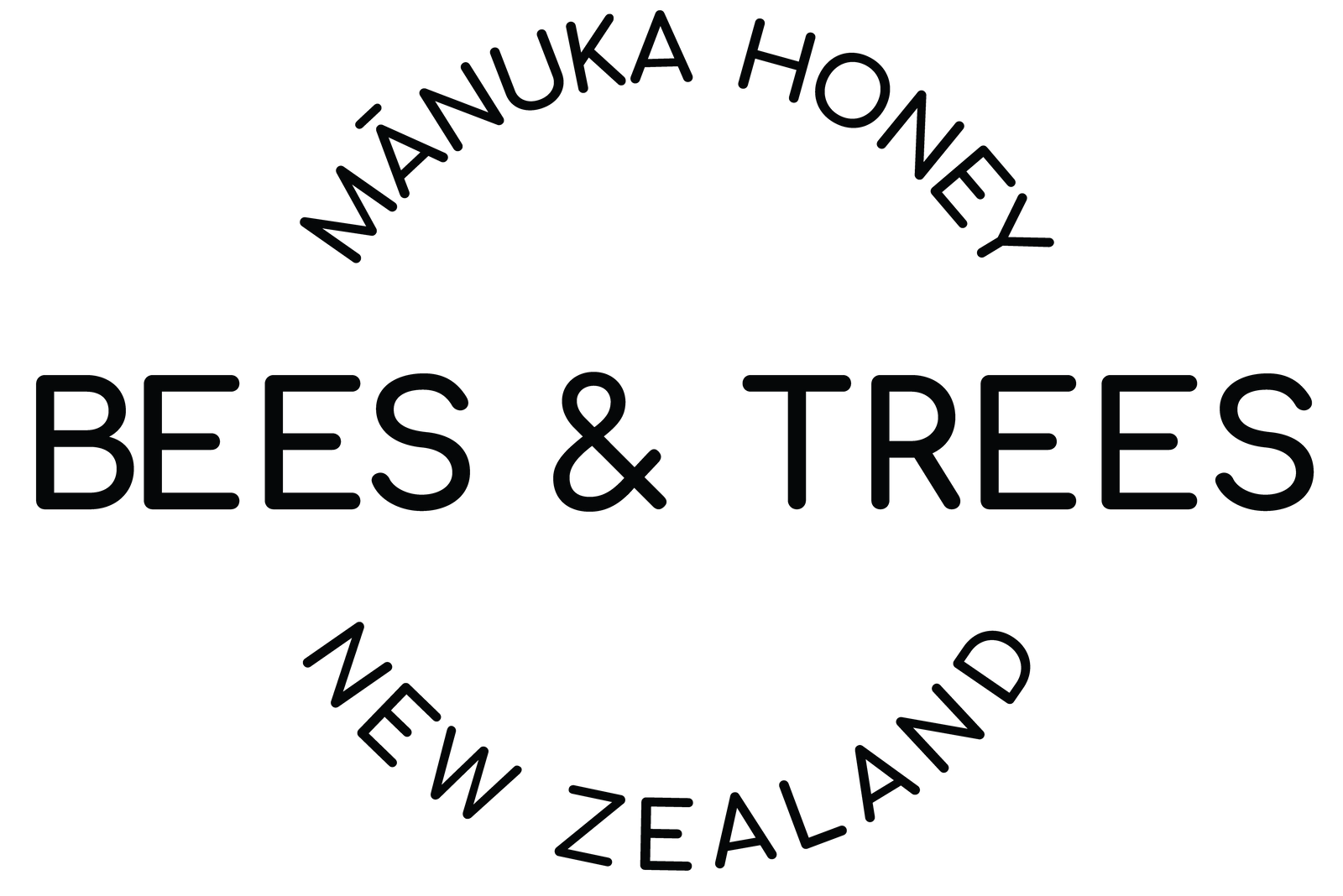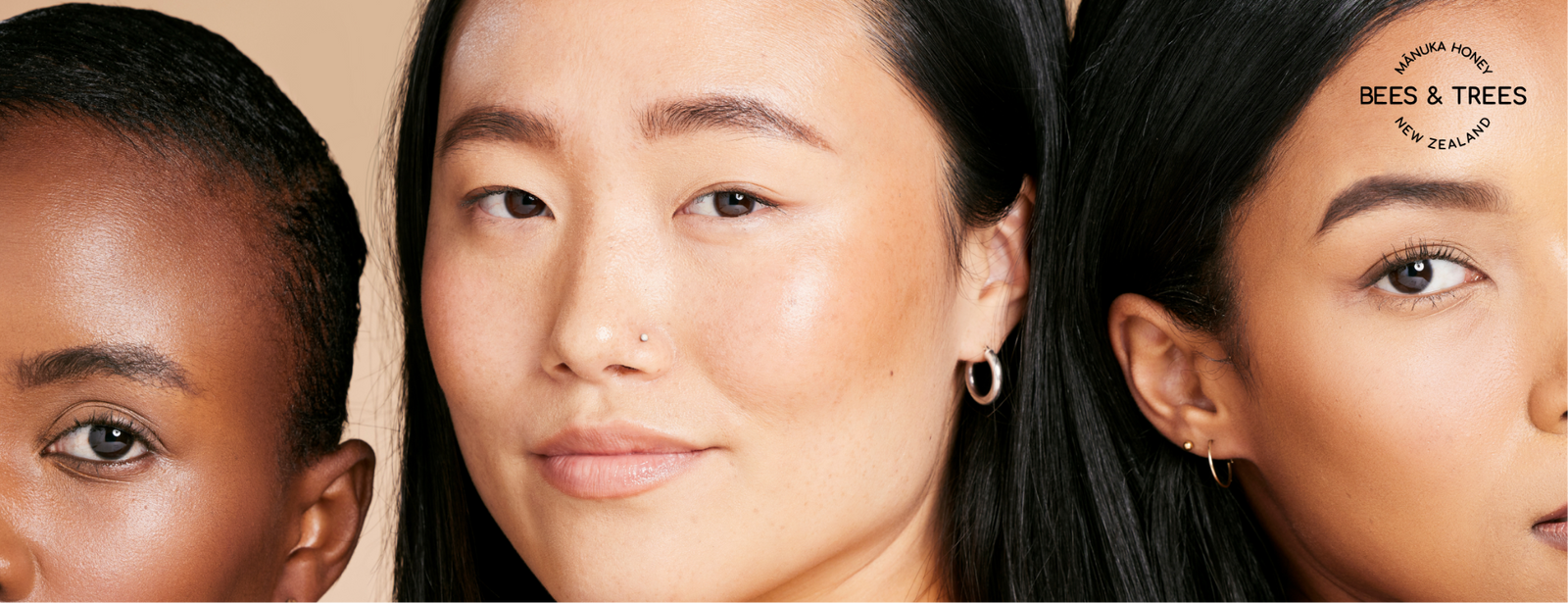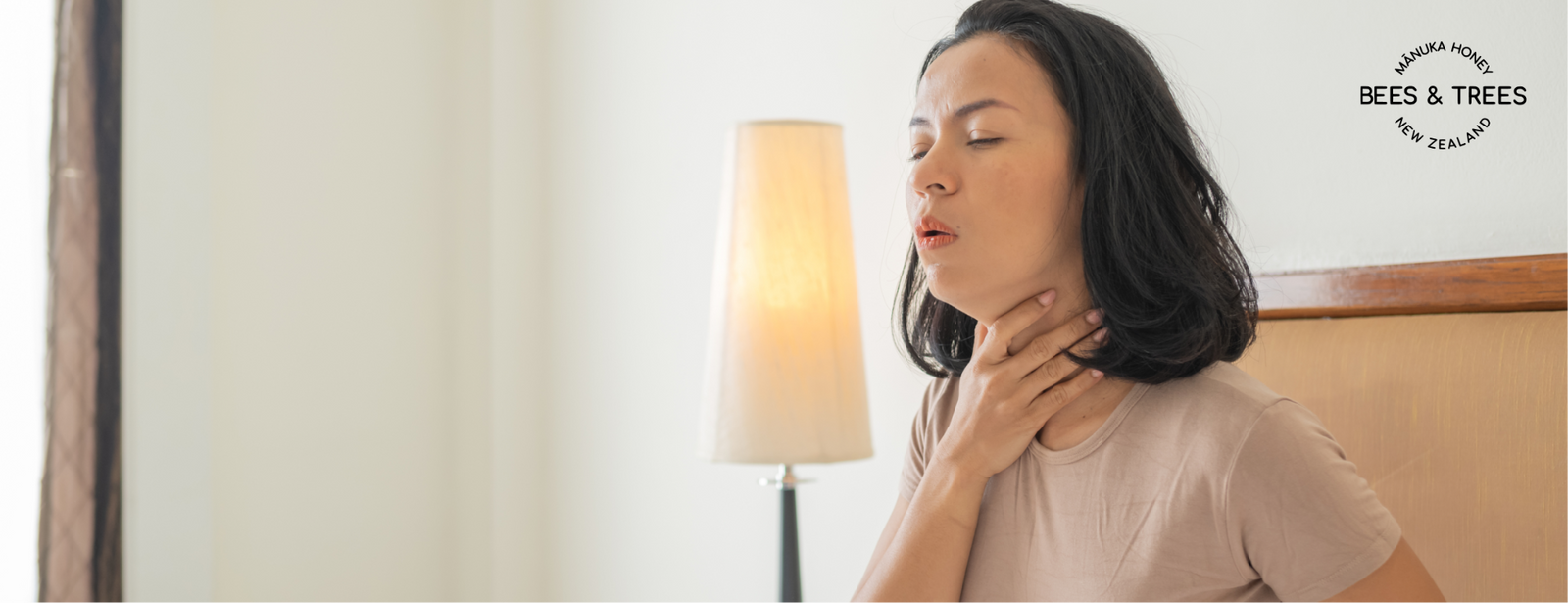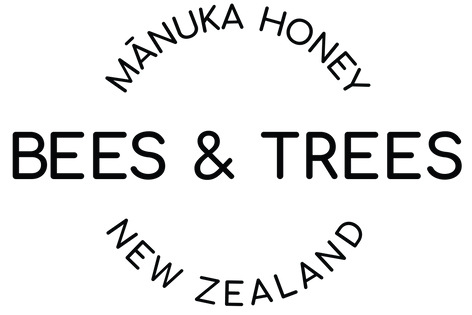
Honey is widely known for its therapeutic and nutritional value and is generally used in managing sore throat symptoms, healing wounds, treating skin rashes, and as a natural sweetener. However, most people do not know that these honey properties are a by-product of the bioactive compounds that make up honey, like polyphenols and flavonoids.
Polyphenols occur as a result of the secondary metabolism of plants and other compounds found in honey. They are widely researched and known for their antioxidant, anti-inflammatory, antimicrobial and cardiovascular benefits. Flavonoids are a type of phenolic subcategory that are widespread in nature and plant-based foods, including honey. There are other types of polyphenols, including phenolic acids, stilbenes, and lignans.
Manuka honey has the highest phenolic content compared to other kinds of honey, which points to its quality and purity. [1] This article will uncover the origins of phenolic compounds, their benefits, and their occurrence in honey.
What are Polyphenols?

Polyphenols are naturally occurring chemical compounds that can be found in teas, fruits, whole grains, vegetables, and spices. They have high dietary and therapeutic value, hence researchers’ keen interest in understanding their properties. Polyphenol compounds are divided into flavonoids and non-flavonoids (phenolic acids) and are responsible for the taste and color of plant-based foods. [2] All these foods have varying amounts of polyphenols, and this can be traced back to the origin of the food; how it was grown, stored, processed, and transported.
Polyphenols are found in a lot of plant-based foods, including honey. Polyphenolic compounds occur in honey when a bee sucks the nectar of a flower or a plant’s living parts and stores the substances in their honeycombs. In the carriage and storage process, the phytochemical substances mix with the fluids from the bee’s body, thereby forming bioactive compounds, among which are polyphenols. Honey’s phenolic composition depends on the floral origin and is used as a primary biomarker in classifying and authenticating high-quality honey. [3] Polyphenols are also known to influence the taste, color, and scent based on the pollen source.
Polyphenols have many benefits and are mainly known for their high antioxidant activity. Their antioxidant mechanism involves stabilizing free radicals in the human body by forming stable and less toxic molecules by giving off hydrogen from one of their hydroxyl groups. [3]
Types of Polyphenols

Polyphenols are usually classified based on the phenol rings and the structural elements that bind them together. There are more than 8,000 occurring polyphenols, but they are broadly divided into four categories [4]:
-
Flavonoids - They are the most studied polyphenol group and are responsible for the colors found on leaves, flowers, and fruits. They can be divided into six categories: flavanols, flavones, isoflavones, flavonols, anthocyanins, and flavanones.
-
Phenolic acids - These compounds have one carboxylic acid group. They are divided into hydroxybenzoic and hydroxycinnamic acid. They are also known to have more antioxidant activity than common vitamins. They are mostly found on the leaves of vegetables and skins of fruits. [5]
-
Stilbenes - They aren’t as commonly found in one’s daily diet compared to other polyphenols. However, they do occur in grapes, sorghum, and berries like blueberries. [6]
-
Lignans - These polyphenols have low molecular weight and are soluble in water. They are commonly found in seeds, vegetables, and whole grains.
What are Flavonoids?

As described above, flavonoids are the most studied phenolic group. They are naturally occurring soluble compounds with a low molecular weight. They have two benzene rings in their structure and an alternate chain of carbon atoms. (C6-C3-C6). They are the most common subcategory of polyphenols, with up to 4,00 varieties identified. Flavonoids are polyphenols, but not all polyphenols are flavonoids. The distinction between the two is that flavonoids are a subclass of polyphenols, and polyphenols are the parent group that contains flavonoids and other phenolic groups.
Flavonoids are known for their anti-inflammatory, antibacterial and antiviral properties. In a 2020 study of flavonoids against enterovirus A71 (EV-A71), researchers concluded that “flavonoids such as penduletin, eupafolin, baicalin, luteolin, quercetin, and chrysosplenetin have been shown to be antiviral agents against EV-A71 based on their IC50 values (<10 µM). These flavonoids were also found to be safe and non-cytotoxic to human cells as indicated by CC50 values.” [7] With the increase in antibiotic-resistant bacteria, scientists are looking at exploring flavonoids as an alternative to traditional antibiotics. [8]
In addition to its unique polyphenol and flavonoid profile, Manuka honey's enhanced antibacterial effectiveness is largely attributed to its high levels of methylglyoxal (MG). To understand more about how MG, alongside UMF and NPA ratings, defines the quality and therapeutic potential of Manuka honey, learn more about MGO, UMF, and NPA.
Sources of Flavonoids

Flavonoids aren’t only found in honey; they are also found in some of your favorite superfoods, including vegetables, tea, fruits, wine, roots, flowers, and whole grains. Tea and wine are the primary sources of flavonoids for most people, since they are a significant part of modern individuals’ daily dietary habits. Flavonoids are also found in apples, and you know what they say about an apple a day! They can also be found in berries, dried oregano, grapefruit, chocolate, and citrus fruits, amongst many more sources, as outlined below.
|
Flavonoid classes |
Natural sources |
|
Flavones |
Red peppers Chamomile Mint Parsley Celery Ginkgo Biloba |
|
Flavonols |
Lettuce Tomatoes Kale Onions Berries Grapes Apples |
|
Flavanones |
Grapes Lemons Oranges |
|
Isoflavonoids |
Leguminous plants like soybeans |
|
Flavanols |
Apples Peaches Bananas Pears Blueberries |
|
Anthocyanins |
Merlot grapes Blueberries Blackberries Black currants Strawberries Bilberries Cranberries Red grapes Raspberries |
Bioavailability of Polyphenols and Flavonoids

Bioavailability is the portion of food that is absorbed and digested in the body. It is not enough to know the number of polyphenols present in honey. Understanding how much of the polyphenol content is readily absorbed into the body when you consume honey is more critical. Polyphenols are also absorbed differently in the body. Some may be absorbed in the intestines, while others may be absorbed in the gastrointestinal tract.
There are different factors that influence bioavailability, including food processing, the composition of microflora in the gut, interaction with other compounds, and environmental factors. The bioavailability of polyphenols differs from one to another, and their chemical structure is the most significant factor determining the rate and amount of absorption into the body. [4] A 2003 study supports the bioavailability of polyphenols in honey. However, the total amount of polyphenols ingested in the plasma was small compared to the quantity available in the honey - thus pointing to low bioavailability. [9] This is not conclusive, as different polyphenols have different bioavailability rates; for example, phenolic aglycones are more readily absorbed in the body compared to others. [3]
Health Benefits of Polyphenols and Flavonoids

Flavonoids and phenolic acids have gained popularity in the scientific community as researchers continue to discover more and more benefits associated with their consumption. They have numerous applications, including cosmetic, pharmaceutical, and medicinal applications. Scientists have labeled flavonoids and phenolic acid as anti-inflammatory, antiviral, antibacterial, antifungal, anti-carcinogenic, and anti-mutagenic. Studies show that polyphenols may also play a protective role in cardiovascular, gastrointestinal, respiratory, and nervous systems. [10]
-
Antimicrobial and Antibacterial Activity
Honey’s antimicrobial activity can be traced back to phenolic compounds like syringic acid and pinocembrin. Honey has been explored as an alternative to commercial antibiotic drugs due to increased antibiotic resistance. A 2009 study found that honey is an effective antimicrobial agent that could be used in treating bacterial infections. [11]
Manuka honey has higher antibacterial properties than regular honey due to methylglyoxal, which is believed to be responsible for non-peroxide antibacterial activity. [12] Research suggests that Manuka honey’s mechanism of action may be due to the high sugar content and low pH levels, which inhibit the growth of microbes. It further concludes that “medical-grade honeys have potent in vitro bactericidal activity against antibiotic-resistant bacteria causing several life-threatening infections to humans.” [13]
Additionally, honey’s antimicrobial activity is closely linked to wound healing. It’s effective as a wound-healing agent because it sterilizes the wound, maintains a moist condition, and forms a protective barrier that prevents infection. Applying honey to a wound encourages tissue regeneration and reduces scar formation. It can be applied to burns, foot ulcers, and simple wounds. [13] [3]
-
Antiviral and Antifungal Activity
The antiviral activity of honey has been studied and proven effective against some viruses. A 2012 study on the effect of the antiviral effect of honey on varicella-zoster virus added Manuka and clover honey to the tissue culture of VZV-infected human malignant melanoma (MeWo) cells, and both kinds of honey displayed significant antiviral activity [14]. Another 2014 study investigated the effect of Manuka honey on influenza viruses, and the results revealed that it has high inhibitory properties against the influenza virus. [15]
Studies have shown that some kinds of honey contain significant antifungal effects against Candida infections namely, C. albicans, C. glabrata, C. dubliniensis, and Rhodotorula sp. [16]
-
Antidiabetic Effect
Honey has shown promising effects on relieving type 1 and 2 diabetes. Oxidative stress is a major factor in the development of diabetic complications. Researchers believe foods like honey that have antioxidant properties may be beneficial in the management of diabetes. Glucose absorption increases the production of reactive oxygen species (ROS), which contributes to oxidative stress. This influences glucose uptake and glycogen processing. Oxidative stress may impair the insulin signaling pathway and cause insulin resistance. It may also cause pancreatic oxidative stress, which leads to incorrect insulin secretion. The antioxidant scavenger activity of honey helps reduce oxidative stress and restore normal function. Compared to other sweeteners like sucrose, honey has a lower effect on blood sugar levels. Thus it may be a great alternative for diabetic patients who are looking for natural sugar sources. [17]
-
Cardiovascular Protection
Consuming phenolic acids and flavonoids available in honey has been shown to reduce the risk of cardiovascular complications. They reduce the clotting activity of blood platelets, improve vasodilation (blood vessel dilation) and prevent the oxidation of low-density lipoproteins ( “bad” cholesterol). In the case of coronary heart disease, polyphenols display antioxidant, antithrombotic, and vasorelaxant effects. [18] [19]
-
Nervous System Protection
Oxidative stress plays a major role in neurodegenerative diseases. Polyphenols found in honey, on the other hand, may help counteract the effects and protect the nervous system from neurological pathologies. According to a study published in 2007, flavonoid intake is associated with better cognitive function. [20] Another study showed that natural polyphenols might have potential in the treatment of Alzheimer’s. [21] However, none of these studies are conclusive and final.
-
Gastrointestinal System Protection
Manuka honey has demonstrated strong antimicrobial properties and is known to be effective against Helicobacter pylori (H. pylori) which causes gastroduodenal ulcers. [22] Antimicrobial activity against other bacteria has been confirmed in other studies. [13] Honey is also great for gut microbial balance as it has demonstrated prebiotic potential, as explained in this study. [23]
In a clinical study done to investigate the effect of honey in children with gastroenteritis, the results showed that “honey shortens the duration of bacterial diarrhea.” [24]
-
Anti-tumoral Effect
Honey’s potential anti-tumoral effects are enabled by different mechanisms including “the induction of apoptosis, cell cycle arrest, the modulation of oxidative stress, the amelioration of inflammation, the induction of mitochondrial outer membrane permeabilization (MOMP), and the inhibition of angiogenesis.” [25] A study investigating anti-tumoural therapeutic effects of Manuka honey against breast cancer in rats revealed a reduction in tumor growth, tumor grading estrogenic activity, and hematological parameters. [26] You can find more comprehensive curated research in one of our latest blogs: Does Cancer Hate Manuka Honey?
Manuka Honey’s Polyphenol Content Compared to Other Kinds of Honey

All kinds of honey have polyphenol content, but the concentration differs depending on the geographic location and floral origin. This means that all honey is not created the same. A 2019 study [1] collected 40 honey samples from all over the world and tested their phenolic profile using high-performance liquid chromatography (HPLC). It was discovered that Manuka honey collected from New Zealand had the highest phenolic acid content (235.50 ± 16.01 µg/g). It was followed by Forest honey from Spain (230.50 ± 22.99 µg/g) and Thyme honey (195.30 ± 25.17 µg/g). Wildflower honey had average phenolic acid content (76.80 ± 10.48µg/g). However, Honeysuckle honey from China exhibited the least total phenolic acid content (40.00 ± 6.01 µg/g). [1]
The table below shows a summary of the phenolic content in 40 types of honey that were tested using high-performance liquid chromatography.

Source: https://www.tandfonline.com/doi/full/10.1080/10942912.2019.1579835
Conclusion

Polyphenols have numerous therapeutic benefits that can be considered for preventative and management purposes. They are naturally found in fruits, vegetables, and plant parts. They are also readily available in honey and are found in high amounts in Manuka honey. Phenolic content could be used to indicate the quality of honey and its purity, which speaks to Manuka’s superior quality.
We hope this article provided you with insightful information on the benefits of polyphenols and flavonoids found in honey. We aim to provide as much research-based information as possible to our readers.
Disclaimer - Bees & Trees frequently shares publicly available scientific and medical research regarding Manuka Honey. We are not medical professionals and the content of our emails, articles, or website postings should not be construed as medical advice.
Appendix
Research related to Flavonoids and Polyphenols in Honey
-
Phenolic acids and flavonoids profiles of commercial honey from different floral sources and geographic sources
-
2019
-
Study type: research review
-
Oxidative stress, chronic inflammation, link to cancer
-
https://www.tandfonline.com/doi/full/10.1080/10942912.2019.1579835
-
Full text available
-
Isolation and characterization of polyphenols in natural honey for the treatment of human diseases
-
2019
-
Study type:
-
Identification and quantification of bioactive compounds in honey
-
Full text available
-
Phenolic Compounds in Honey and Their Associated Health Benefits: A Review
-
2018
-
Study type: Research review
-
Polyphenol compounds, honey, benefits
-
Full text available
-
Plant polyphenols as dietary antioxidants in human health and disease
-
2009
-
Study type: Research review
-
Polyphenols, antioxidants, bioavailability
-
Full text available
-
Phenolic acids: Natural versatile molecules with promising therapeutic applications
-
2019
-
Study type: Research review
-
Phenolic acids, benefits, applications, types
-
Full text available
-
Polyphenol Stilbenes: Molecular Mechanisms of Defence against Oxidative Stress and Aging-Related Diseases
-
2015
-
Study type: Research review
-
Polyphenol stilbenes, aging-related diseases, bioavailability, oxidative stress
-
Full text available
-
Flavonoids as Antiviral Agents for Enterovirus A71 (EV-A71)
-
2020
-
Study type: Research review
-
Flavonoids, antivirals, Enterovirus 71 (EV-A71), infectious childhood disease, viruses
-
“flavonoids such as penduletin, eupafolin, baicalin, luteolin, quercetin, and chrysosplenetin have been shown to be antiviral agents against EV-A71 based on their IC50 values (<10 µM). These flavonoids were also found to be safe and non-cytotoxic to human cells as indicated by CC50 values.”
-
Full text available
-
Antibacterial Activities of Flavonoids: Structure-Activity Relationship and Mechanism
-
2014
-
Study type: Research review
-
Flavonoids, antibiotic substitutes, antibacterial mechanism, inhibition properties
-
Full text available
-
Honey with high levels of antioxidants can provide protection to healthy human subjects
-
2003
-
Study type: Clinical trial
-
Honey, antioxidants, bioavailability
-
Abstract only
-
Flavonoids: an overview
-
2016
-
Study type: Research review
-
Flavonoids, structure and composition, types, benefits
-
Full text available
-
The unusual antibacterial activity of medical-grade Leptospermum honey: antibacterial spectrum, resistance and transcriptome analysis
-
2009
-
Study type: Research review
-
Medical-grade honey, antibacterial resistance, antimicrobial agents
-
Abstract only
-
Identification and quantification of methylglyoxal as the dominant antibacterial constituent of Manuka (Leptospermum scoparium) honeys from New Zealand
-
2008
-
Study type: Research review
-
Methylglyoxal, Manuka honey, antibacterial activity
-
Abstract only
-
Honey: its medicinal property and antibacterial activity
-
2011
-
Study type: Research review
-
Antibacterial activity, honey, medicinal property, wound healing property
-
Abstract only
-
In vitro antiviral activity of honey against varicella-zoster virus (VZV): A translational medicine study for potential remedy for shingles
-
2012
-
Study type: Research review
-
Antiviral activity, varicella-zoster virus, Manuka honey, clover honey
-
Abstract only
-
Anti-influenza viral effects of honey in vitro: potent high activity of manuka honey
-
2014
-
Study type: Primary study
-
Influenza virus, Manuka honey, antiviral activity.
-
Abstract only
-
Honey has an antifungal effect against Candida species
-
2006
-
Study type: Research review
-
Candida infections, antifungal activity, honey
-
Abstract only
-
Differential effects of honey, sucrose, and fructose on blood sugar levels
-
1990
-
Study type: Comparative study
-
Honey, blood sugar levels
-
Abstract only
-
The potential role of honey and its polyphenols in preventing heart diseases: a review
-
2010
-
Study type: Research review
-
Polyphenols, honey, cardiovascular disease
-
Abstract only
-
Honey and its protective role against oxidation of human low density lipoproteins and total serum lipoproteins
-
2012
-
Study type: Primary study
-
Honey, antioxidants, cardiovascular diseases, lipoproteins
-
Full text available
-
Flavonoid intake and cognitive decline over a 10-year period
-
2007
-
Study type: Cohort study
-
Flavonoids, cognitive function, cognitive performance
-
Abstract only
-
Natural Polyphenols in the Treatment of Alzheimer's Disease
-
2018
-
Study type: Research review
-
Polyphenolic compounds, neurodegenerative disease
-
Abstract only
-
The Antibacterial Activity of Honey on Helicobacter Pylori
-
2006
-
Study type: Research review
-
Antibacterial, Honey, H. pylori
-
Abstract only
-
Effect of honey in improving the gut microbial balance
-
2017
-
Study type: Research review
-
Microbial balance, honey, probiotics, prebiotics, and synbiotics
-
Full text available
-
Honey in the treatment of infantile gastroenteritis
-
1985
-
Study type: Clinical trial
-
Gastroenteritis, diarrhea, honey
-
“honey shortens the duration of bacterial diarrhea.”
-
Abstract only
-
Influence of honey bee products on transplantable murine tumors
-
2003
-
Study type: Research review
-
Honey, polyphenolic compounds, murine tumors
-
“the induction of apoptosis, cell cycle arrest, the modulation of oxidative stress, the amelioration of inflammation, the induction of mitochondrial outer membrane permeabilization (MOMP), and the inhibition of angiogenesis”
-
Abstract only
-
Oral Administration of Tualang and Manuka Honeys Modulates Breast Cancer Progression in Sprague-Dawley Rats Model
-
2017
-
Study type: Evidence-based
-
Antitumoural effect, Manuka honey, breast cancer, Tualang honey
-
Abstract only







